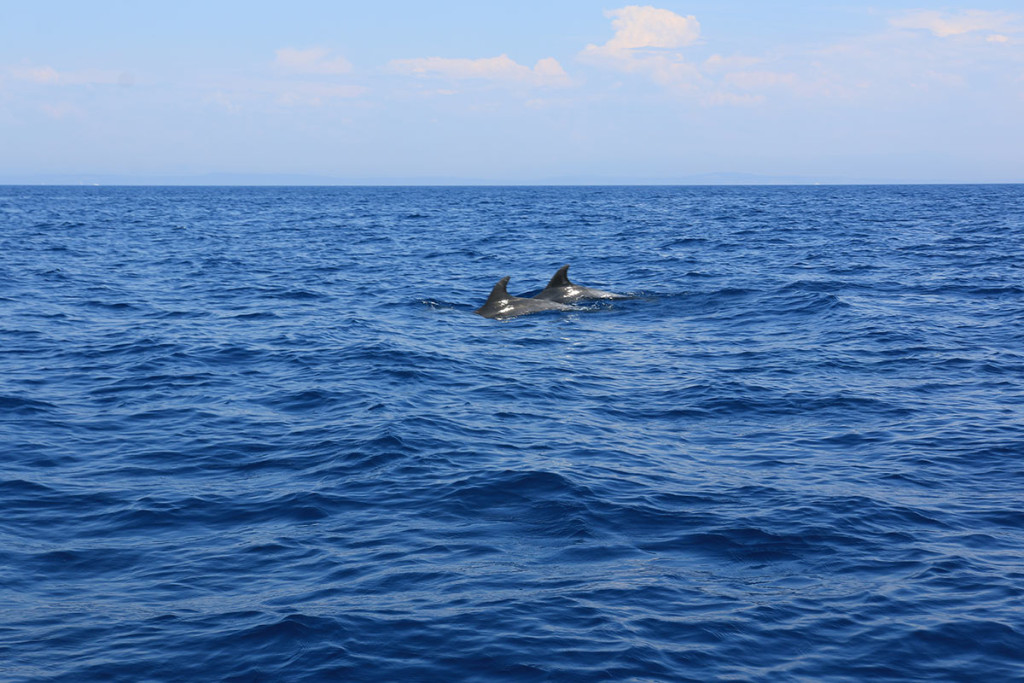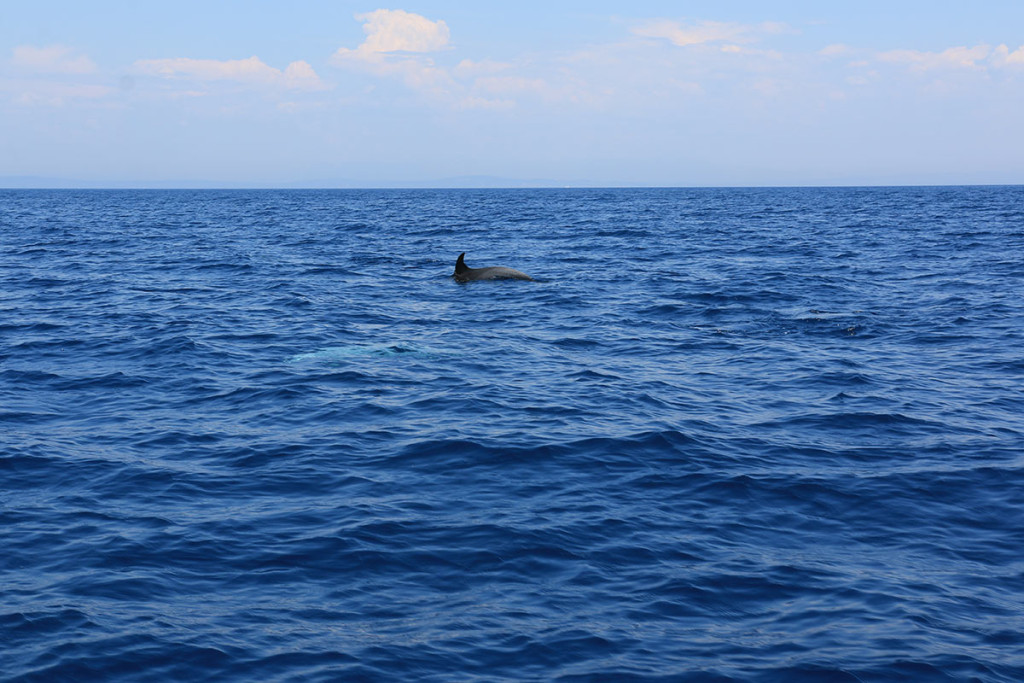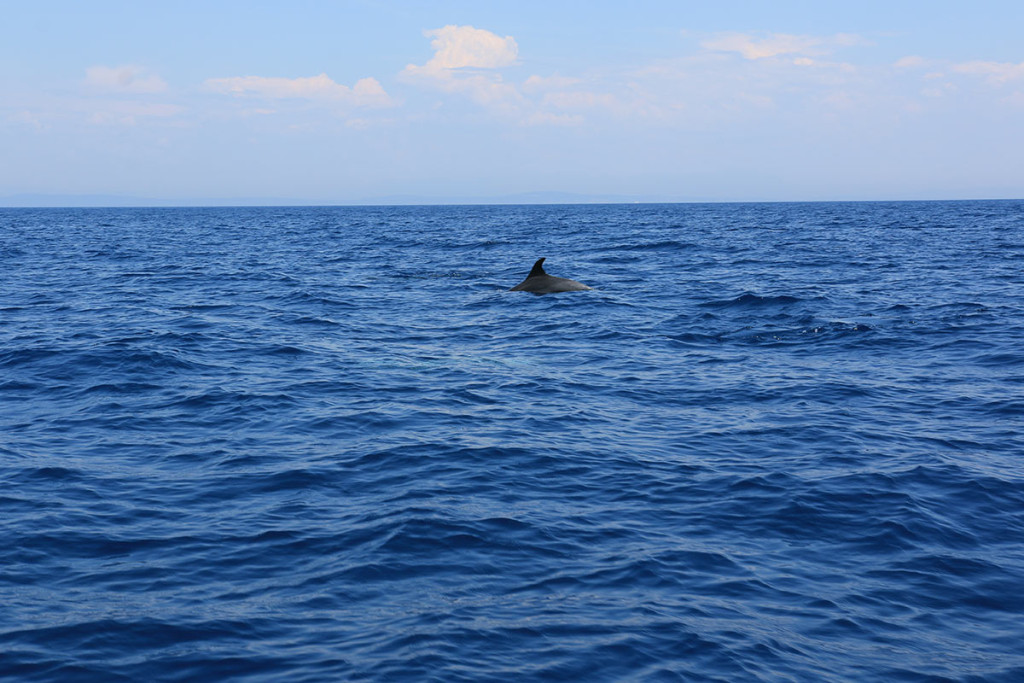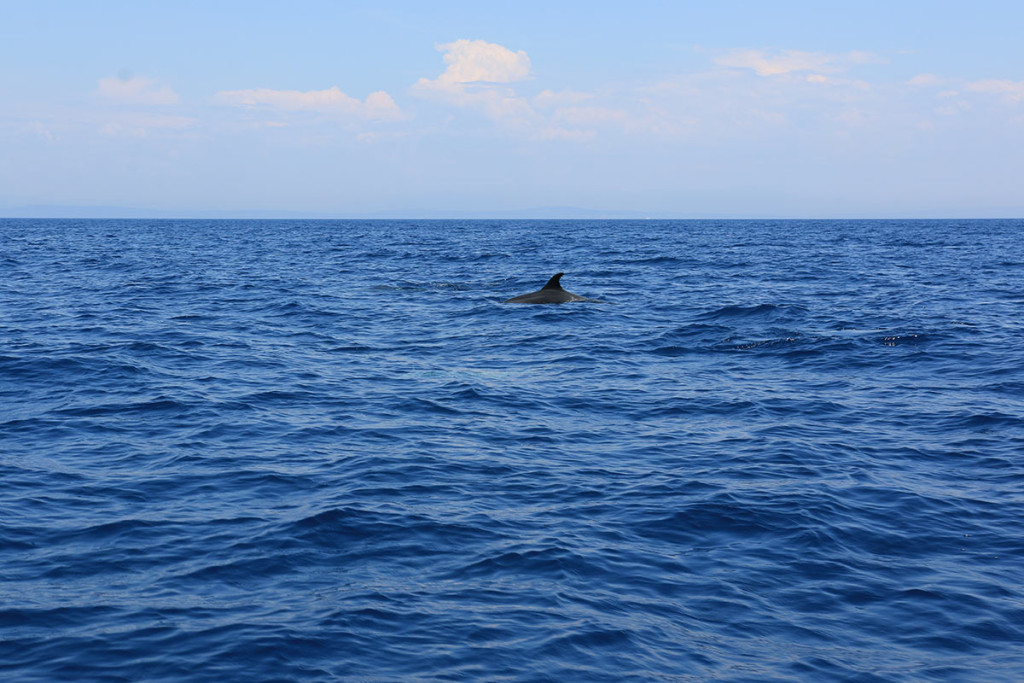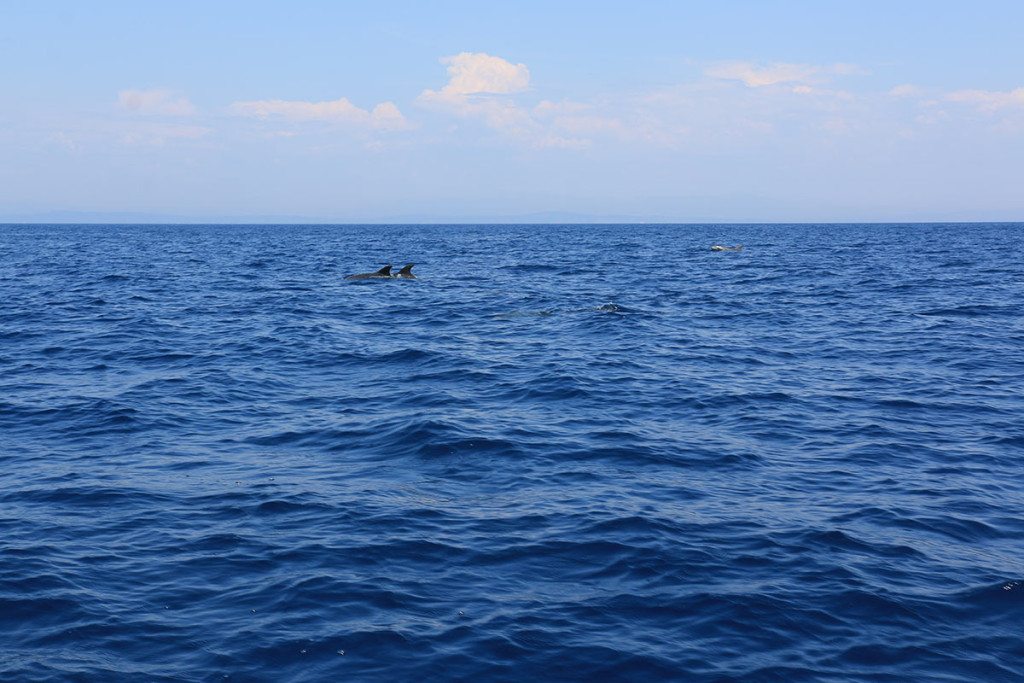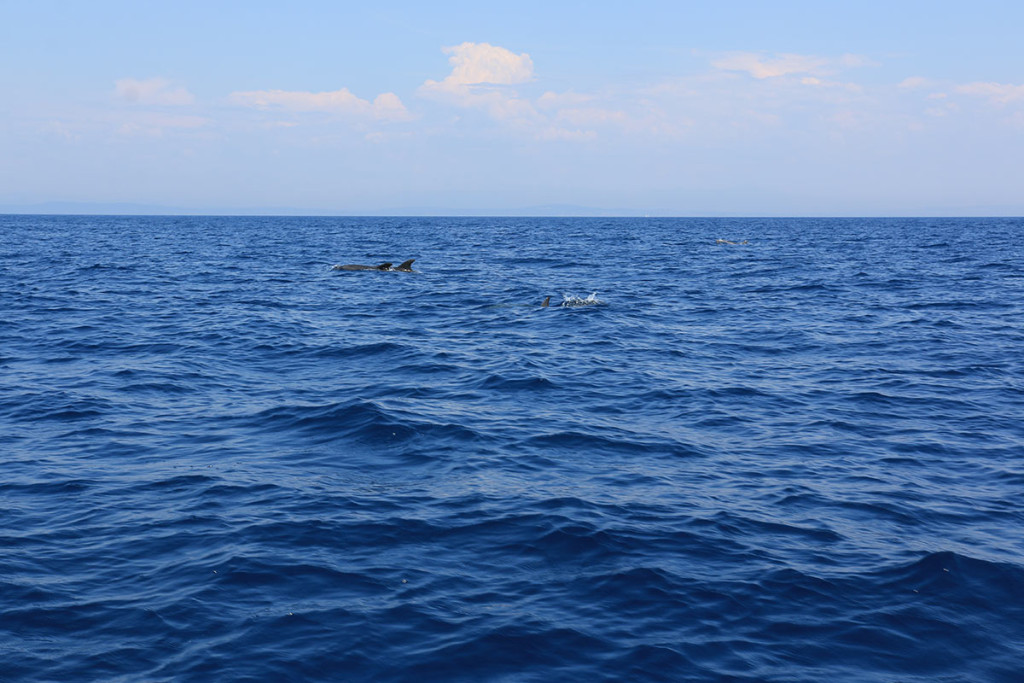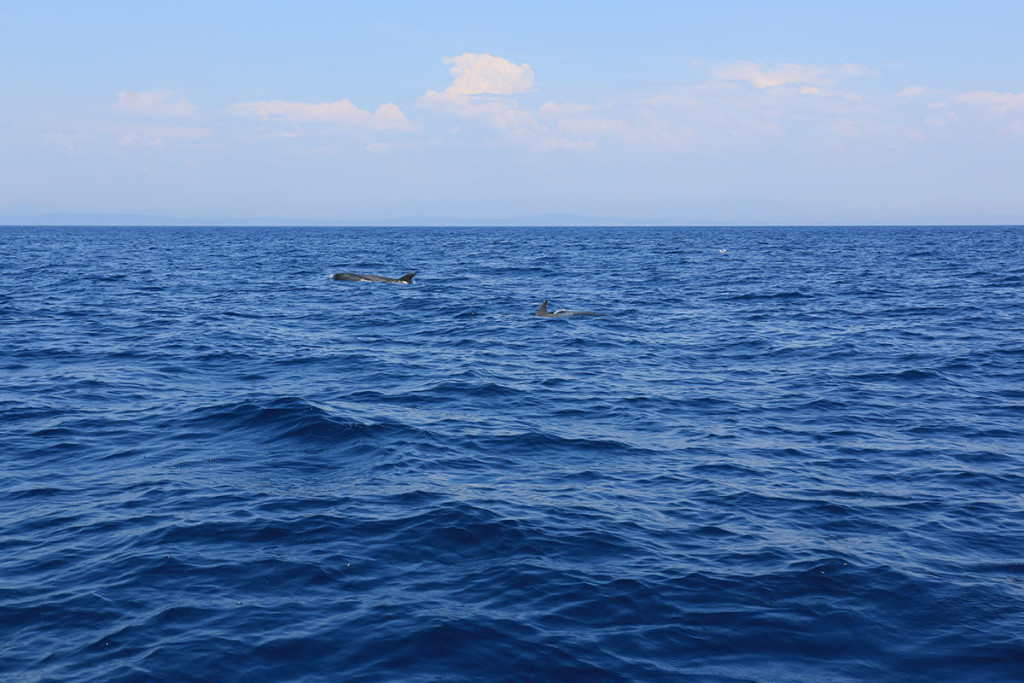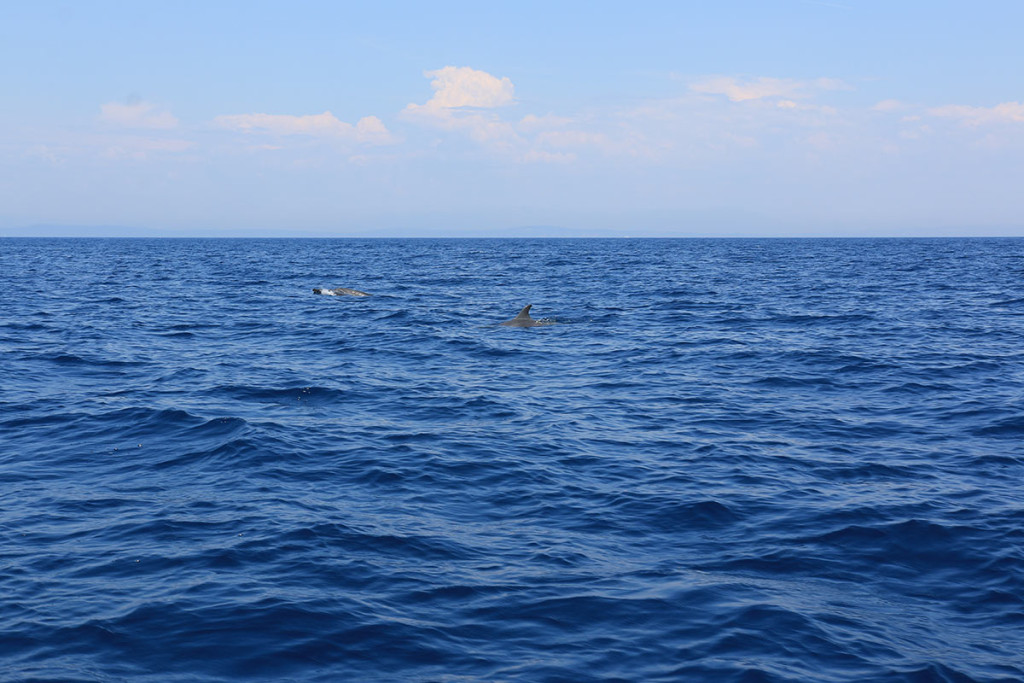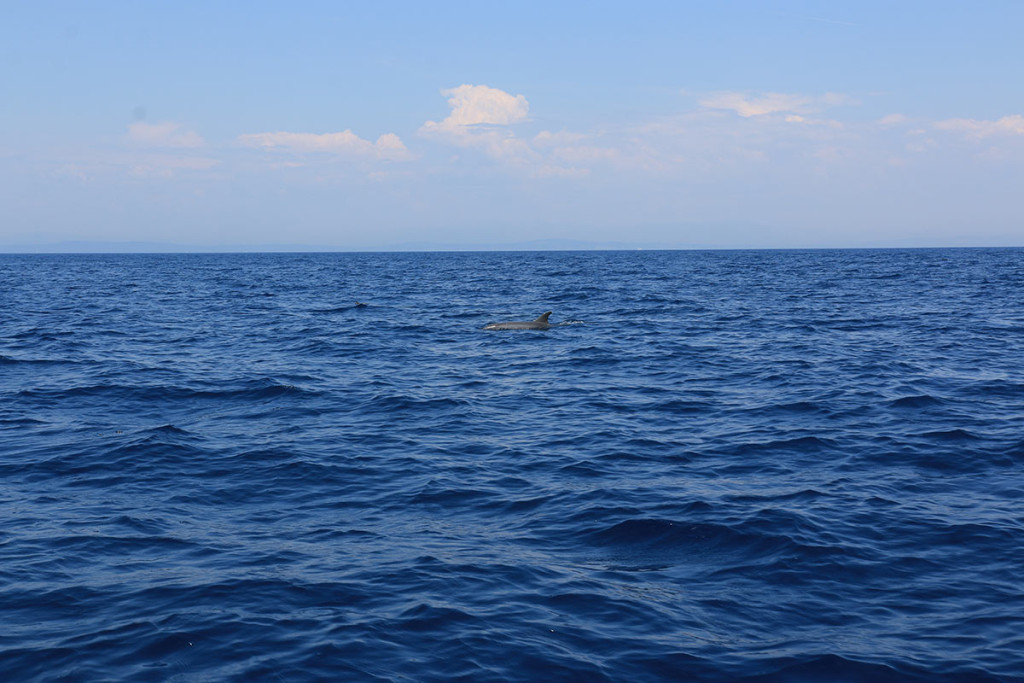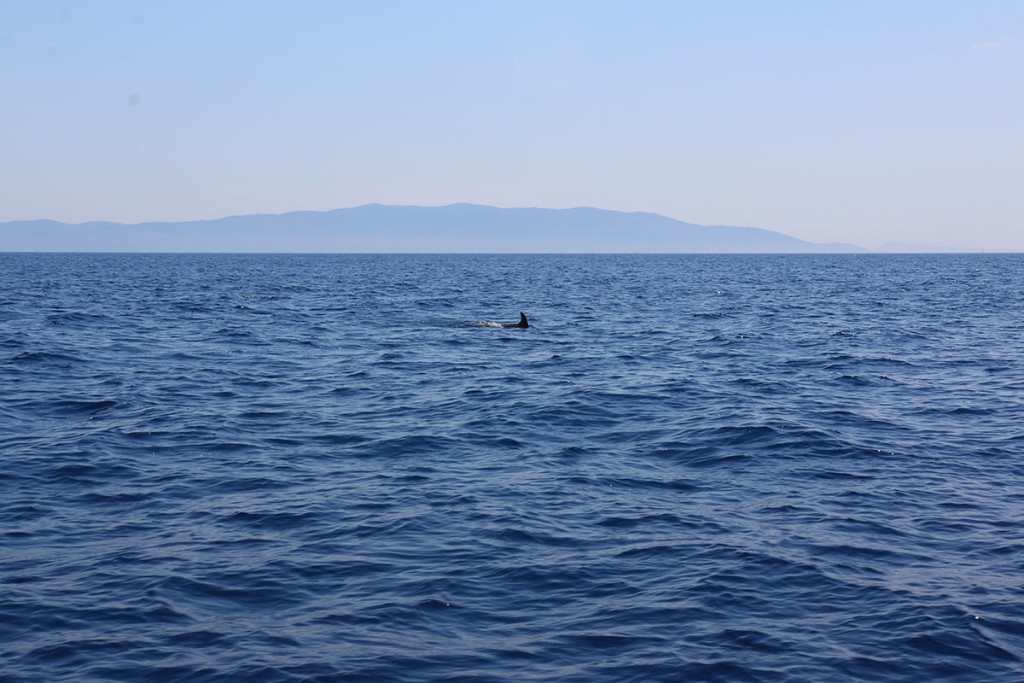Inspired with meeting the dolphins on our way to Blue Cave on Bisevo island we have researched about dolphins and dolphin species in the Adriatic sea.
Only two species of dolphins live in the Adriatic Sea, the good dolphin (Tursiops truncatus, eng. Bottlenose dolphin) and the regular dolphin (Delphinus delphis Linnaeus).
Regular dolphin used to live in the entire Adriatic sea but today can only be found in the south part of the Adriatic, and this happens on rare occasions. Unfortunately they can no longer be found in the North Adriatic sea.
Bottlenose dolphin, the species we have encountered near Maslinica on our tour to the Blue Cave, can still be found all across Adriatic sea. They can reach 3.8 meters in length and the oldest known good dolphin reached the age of 49 years old.
There are some unbelievable stories about the friendship of Bottlenose dolphins and fishermen in this area. Sometimes dolphins would get completely friendly with people and then they would eat from their hands and play with the children.
The most popular Bottlenose dolphin is of course Flipper from the TV series that carry the same name. The show brought closer Bottlenose dolphins to the large audience and created a spark for appreciation and love of many generations towards this majestic sea mammal.
The presence of the Bottlenose dolphins in the Adriatic sea is the sign of the clean sea and the healthy population of fish who serve as food for the dolphins.
The biggest threat to the dolphins today are the kilometres of fishing nets being thrown in the sea. Dolphins usually tangle themselves inside of them and are unable to break free.
There is a story from not long ago about a Bottlenose dolphin who swam into Maslinica bay at Solta island visibly injured and tangled in the fishing net, seeking help. The second dolphin swam with him inside the bay, constantly trying to help the injured dolphin break free from the remaining net. Even though local population tried to help the dolphin, his companion, the other dolphin helped the tangled dolphin break free from the fishing net and they swam outside the Maslinica bay out to the open sea together.
Dolphins and other sea mammals are protected by law in Croatia and we must actively work on their protection, and not only that, we must help them to thrive by keeping our sea clean and the fish population healthy.
Bottlenose Dolphins Photo Gallery
Facts about Bottlenose Dolphins
- Bottlenose dolphins can reach swimming speed up to 22mph (35 km/h)
- They can dive as deep as 915 meters (3000 feet)
- Bottlenose dolphins have smooth skin which flakes of and is replaced every few hours
- They need air to breath and can hold breath while diving for 7 minutes
- Bottlenose dolphins have almost 360 degree field of vision and their eyes can move independent of one another
- Their strong eye muscle allows them to focus underwater as well as in the air
- They can produce up to one thousand clicks per second which they use as echolocation revealing the size and the shape of the objects and animals around them
- Bottlenose dolphins consume 8-15 kilograms of fish each day (they also eat shrimp and squid)







